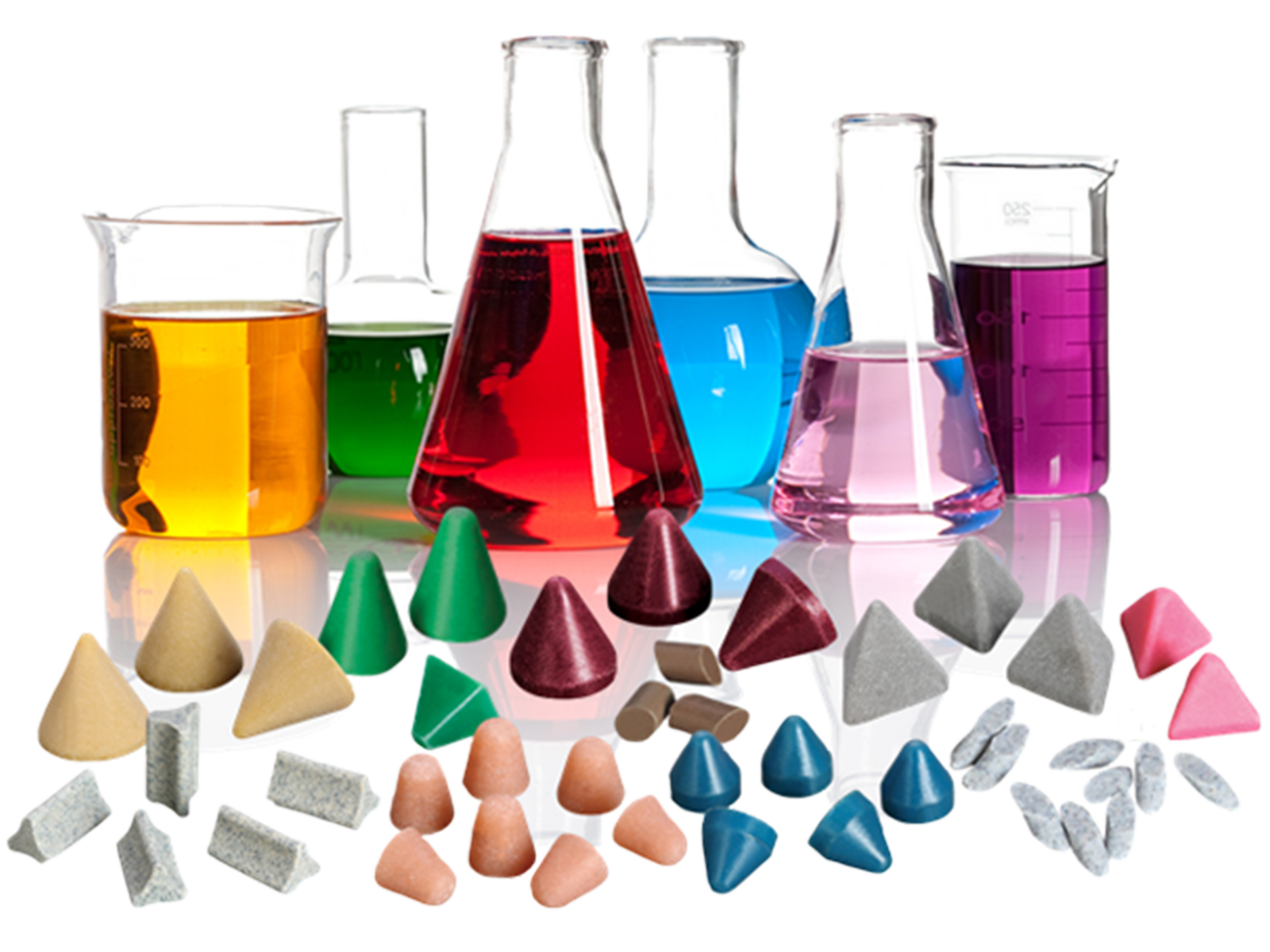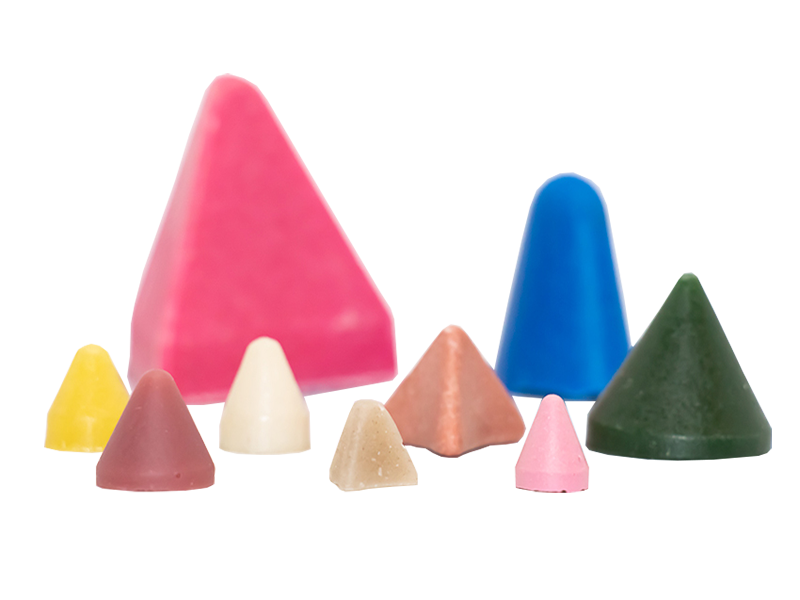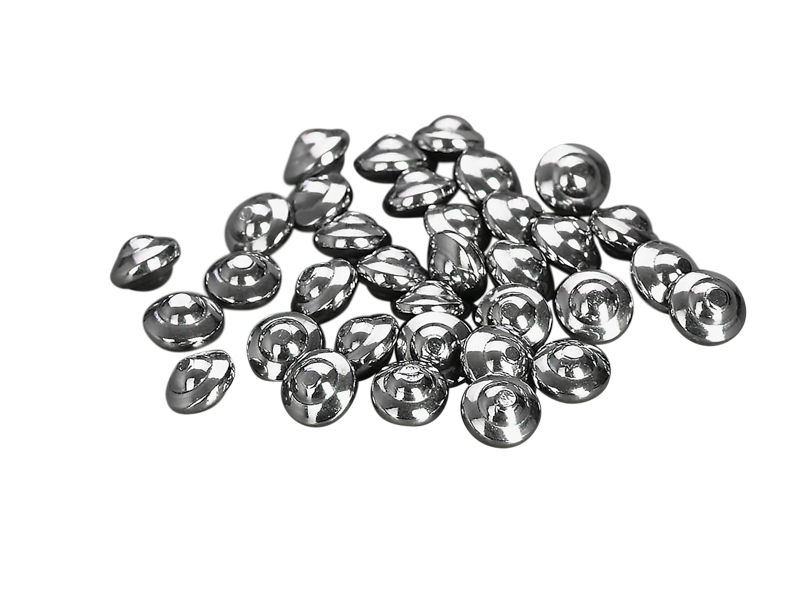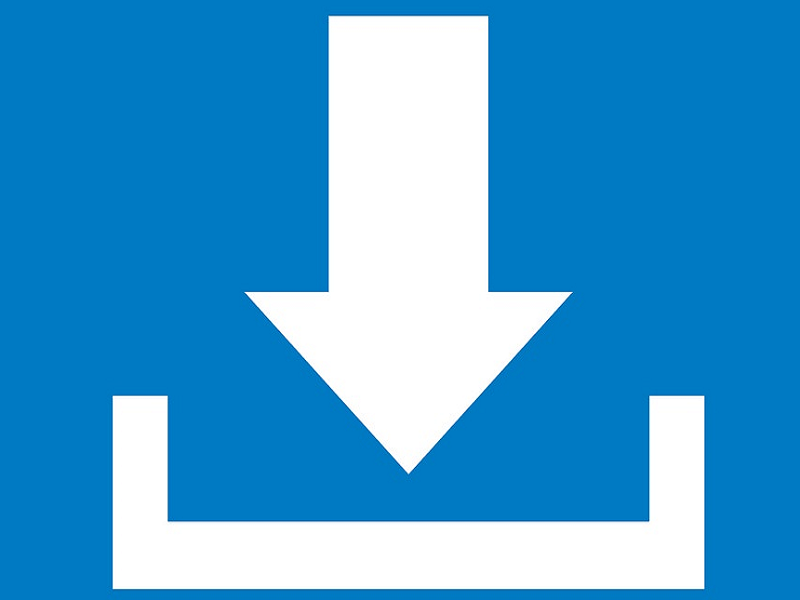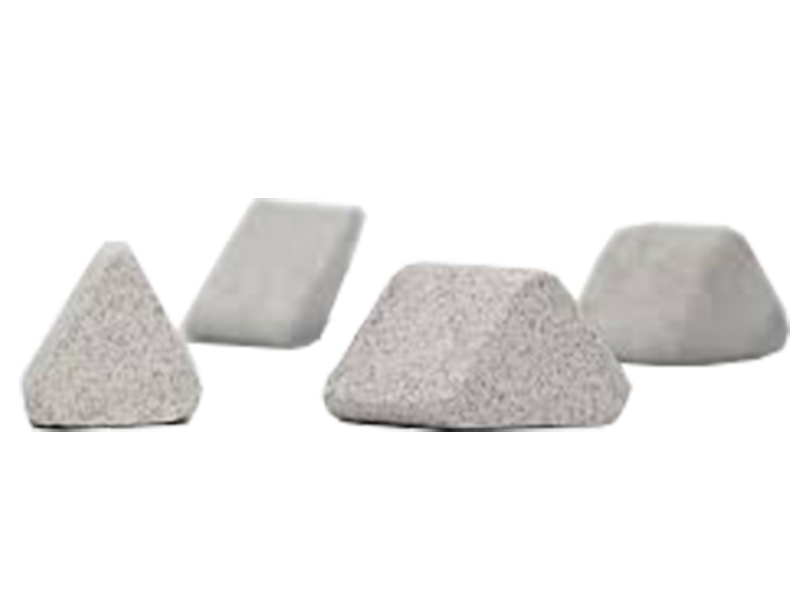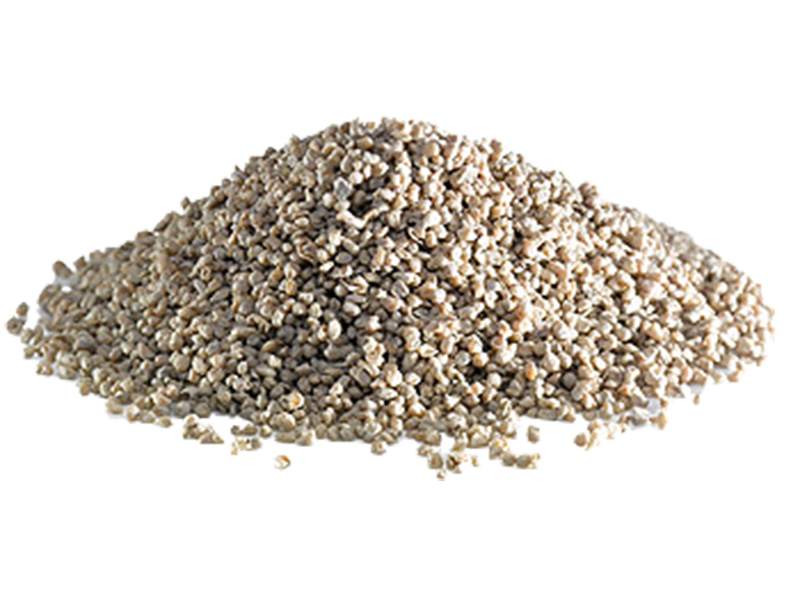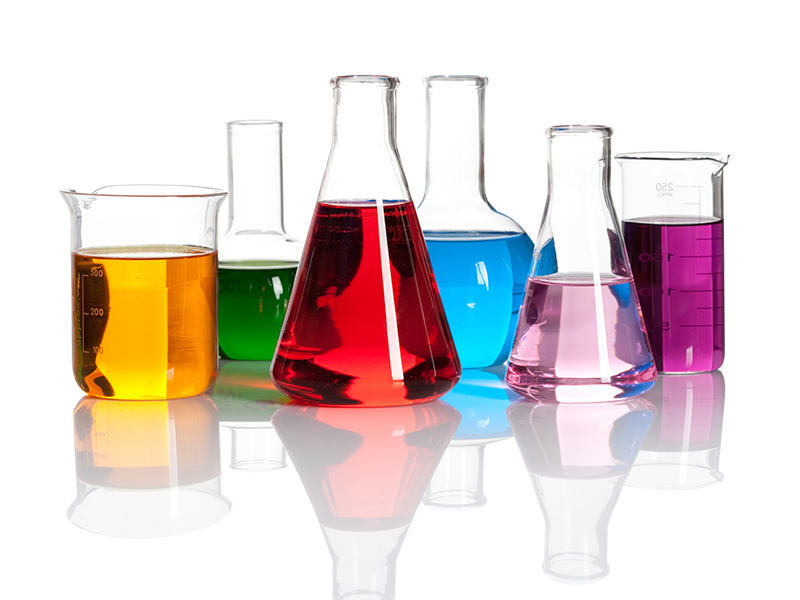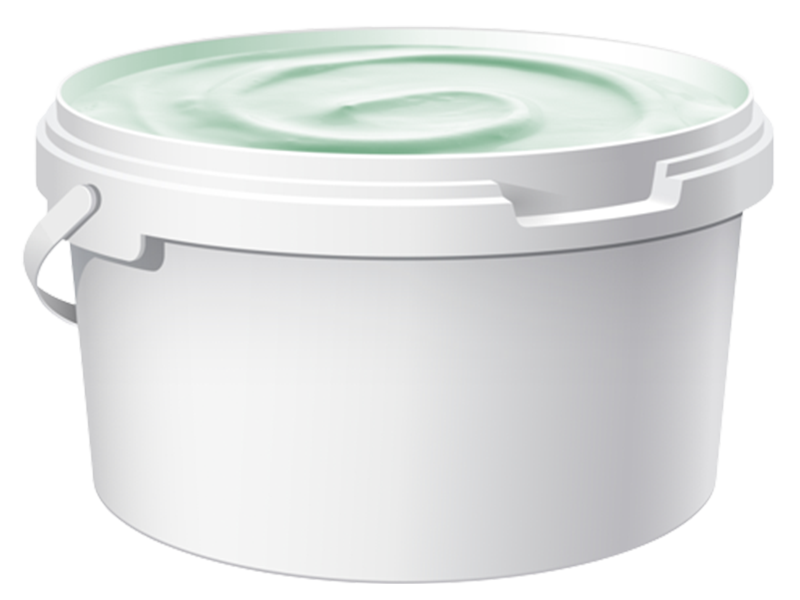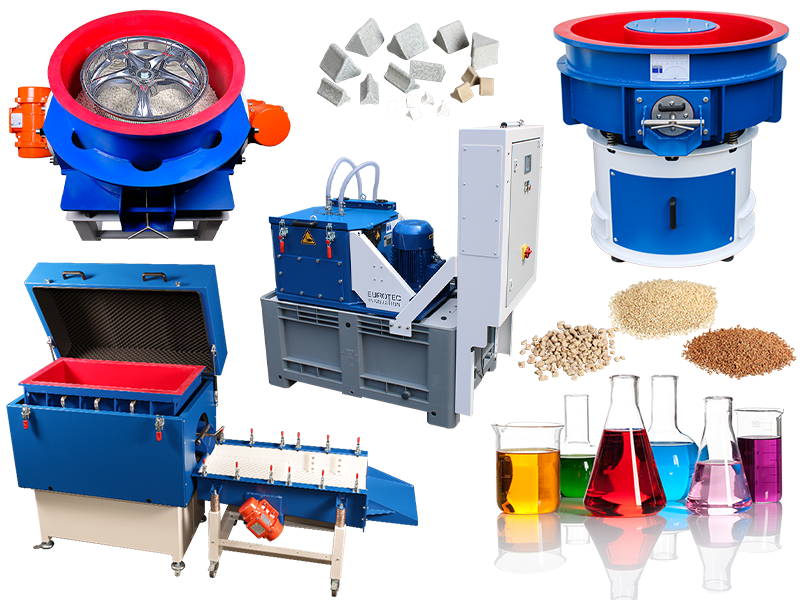Article Number Key
All abrasive medias are provided with an individual article code in order to clearly identify them.
Example Designation: KE-D13x13E S25
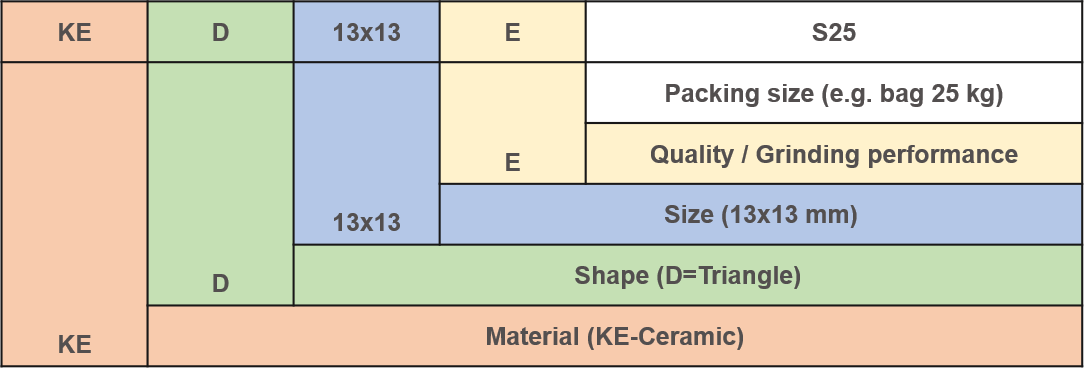
Quality / Grinding performance
The grinding performance has a significant influence on the grinding process and the grinding pattern. The qualities range from A (very abrasive) to P (polishing). In addition to the quality, the media size also influences the grinding performance.
With quality P, the grinding wheel is made of pure porcelain (Ceramic), which can serve as a carrier for grinding pastes or other additives. The abrasive media itself has no abrasion.
Depending on the media shape and size, several grinding stages are available.

 english ˅
english ˅
 deutsch
deutsch